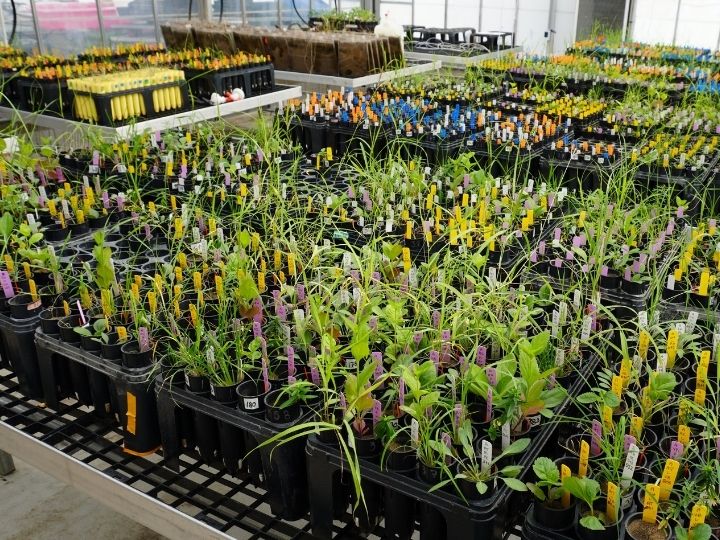
Climate change presents a host of challenges, from changing temperatures to rising sea levels and extreme weather events. It could also lead to less plant diversity on Texas coastal prairies, according to a new study by the University of Houston.
The team of ecology and evolutionary researchers examined the impact of precipitation on plant-soil interactions. Their findings could help ecologists and agricultural leaders predict how future plant environments will look under different climatic conditions, and specifically, how changing climates could influence Texas grasslands. The study was published today in Nature Ecology and Evolution.
"If we look at what climate change holds for us, we will see precipitation shifts, and we might end up with different plant communities," said lead author Jan Dudenhoeffer, postdoctoral researcher at UH's College of Natural Sciences and Mathematics. "Not only because certain plants fare better or worse in wet or dry conditions, but because of the interactions going on in the soil."
Various plant species grow in different soil communities. Soil communities are the bacteria, fungi and other microorganisms which can be beneficial or harmful to plants. This interaction is called plant-soil feedback, and for ecologists, it is a powerful theory used to make predictions about plant community development. However, until this paper was published, no one has used plant-soil feedback to forecast how plant communities will respond to changes in precipitation due to climate change.
Dudenhoeffer collaborated on the study with Kerri Crawford, associate professor of biology and biochemistry, and Noah Luecke, a doctoral student in Crawford's lab.
The research team tested eight Texas coastal prairie plant species: Asclepias tuberosa, Bothriochloa ischaemum, Ratibida columnifera, Rudbeckia hirta, Sorghum halepense, Sorghastrum nutans, Schizachyrium scoparium and Verbena brasiliensis.
They grew about 2,300 plants in the greenhouse on top of UH's Science and Research 2 building, in one of the largest studies of its kind. Each plant species was grown in soil previously occupied by a plant of its same species or in the soil of a plant from each of the other seven species.
"The size of this experiment and intricate design manipulating rainfall and microbial communities provided logistical challenges," said Luecke. "The design, setup, data collection, and molecular and nutrient analysis could not have been accomplished if it were not for our cooperative effort."
They conducted their experiment with three different water treatments – low watering to mimic drier conditions, average, and high watering. They tested how well the plants grew in all combinations of soil and watering levels, then used a computer simulation to predict how a plant community would develop over time, given their results.
They found plant diversity decreases as conditions get more wet because certain plant species would become more dominant and possibly take over an environment.
"If the world gets wetter, interactions between plants and soil microbes will cause plant species to be lost from communities," Crawford said. "It becomes more difficult to predict which species will remain in communities."
Low plant diversity is often associated with unstable systems. For example, if one species does poorly under a certain circumstance, a different species could make up for it and flourish in the biome. But if just one species is dominant, and something happens and it is wiped out, there is a significant problem as the loss cannot be buffered by other species, according to the researchers.
The team writes future work would involve further study of the timing of rain events on plant-soil interactions and how soil communities from different groups of soil fungi react to changes in rainfall patterns.
— Story by Rebeca Trejo, UH College of Natural Sciences and Mathematics






